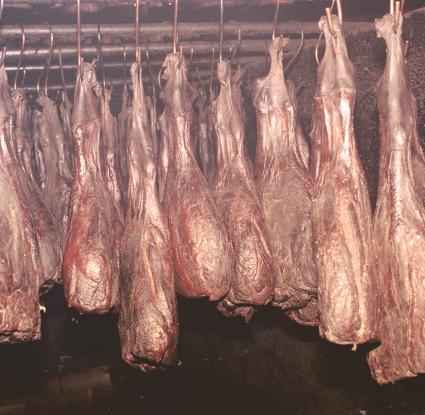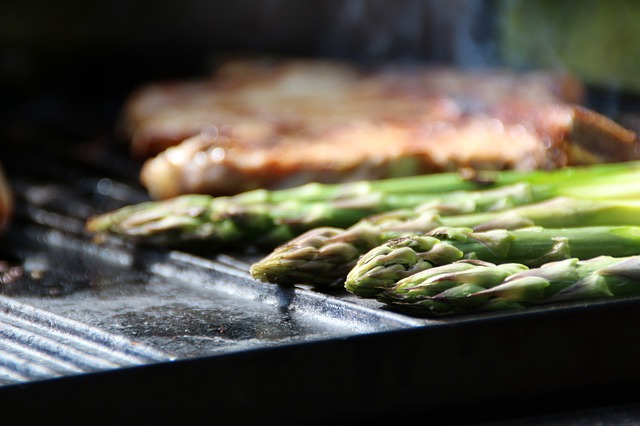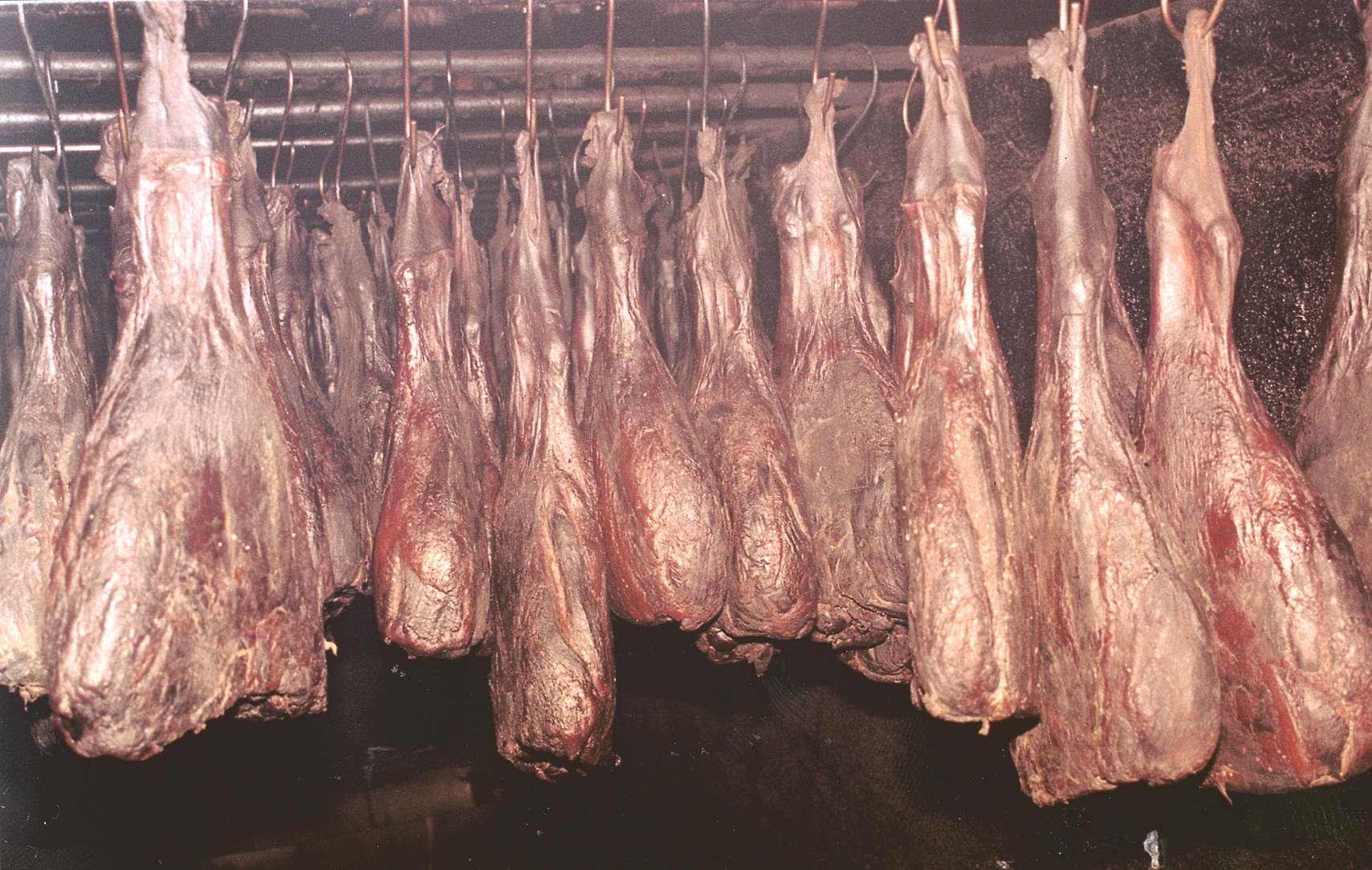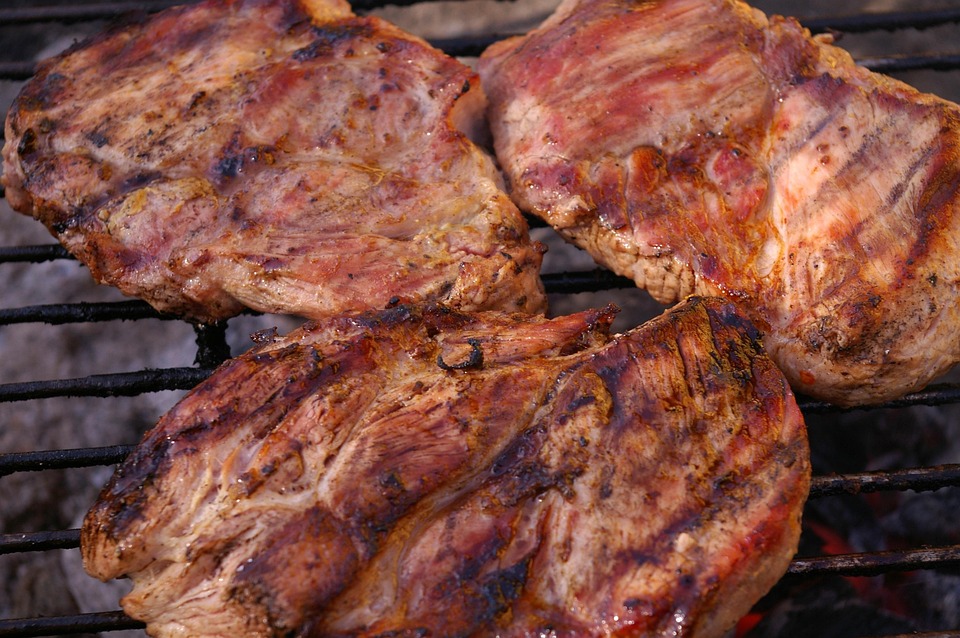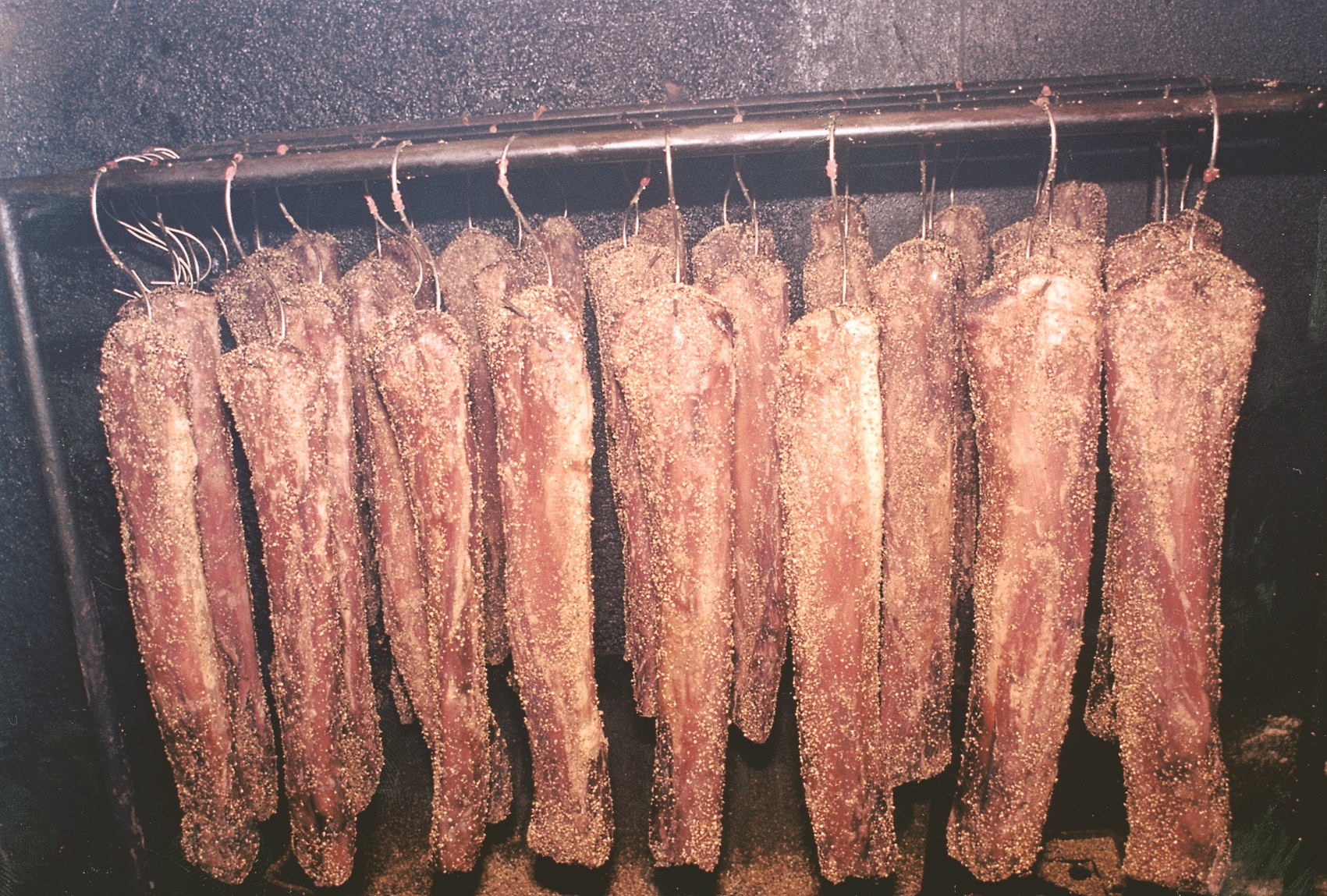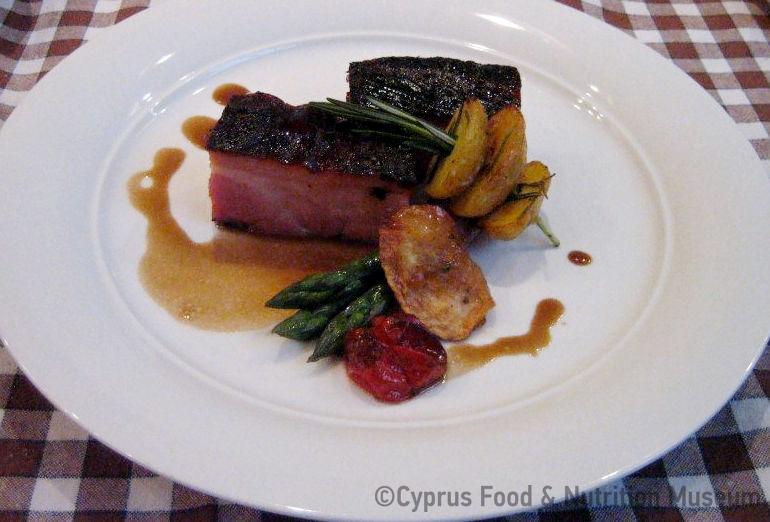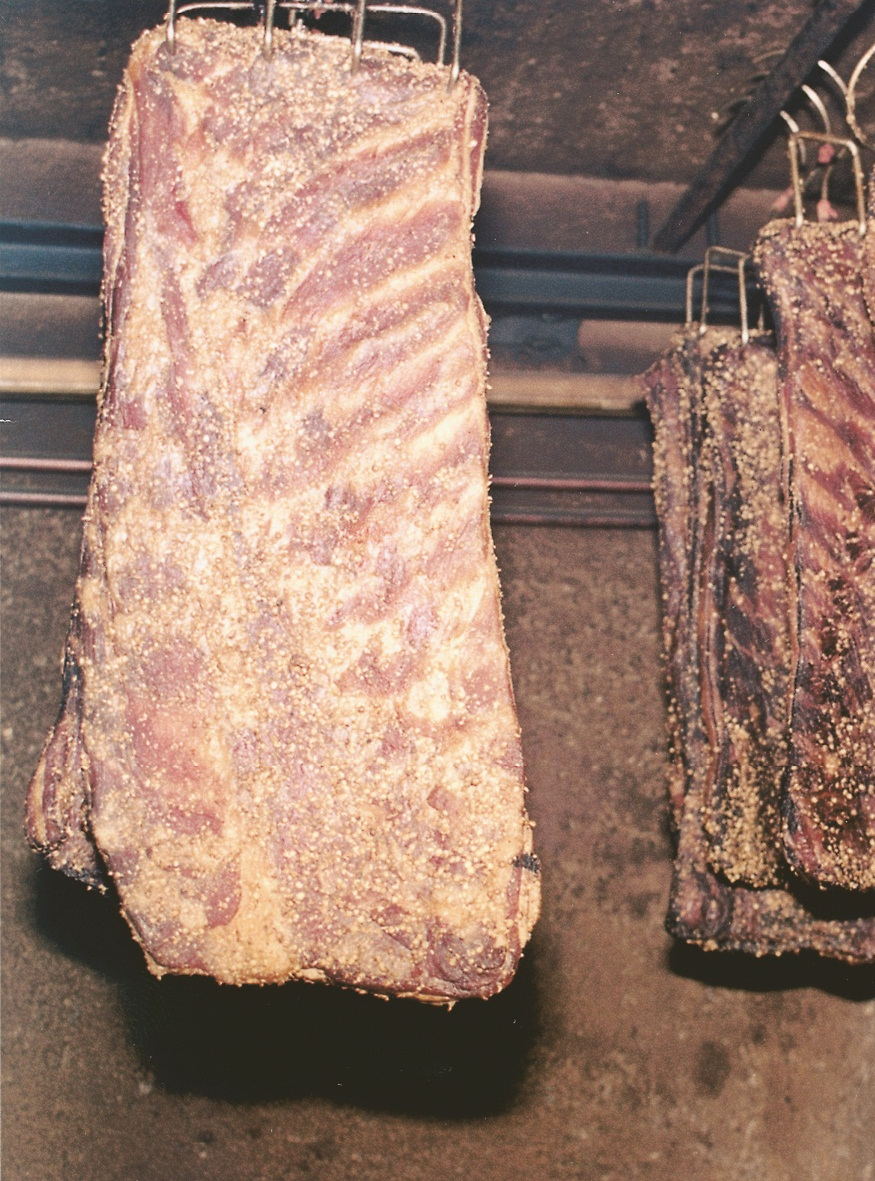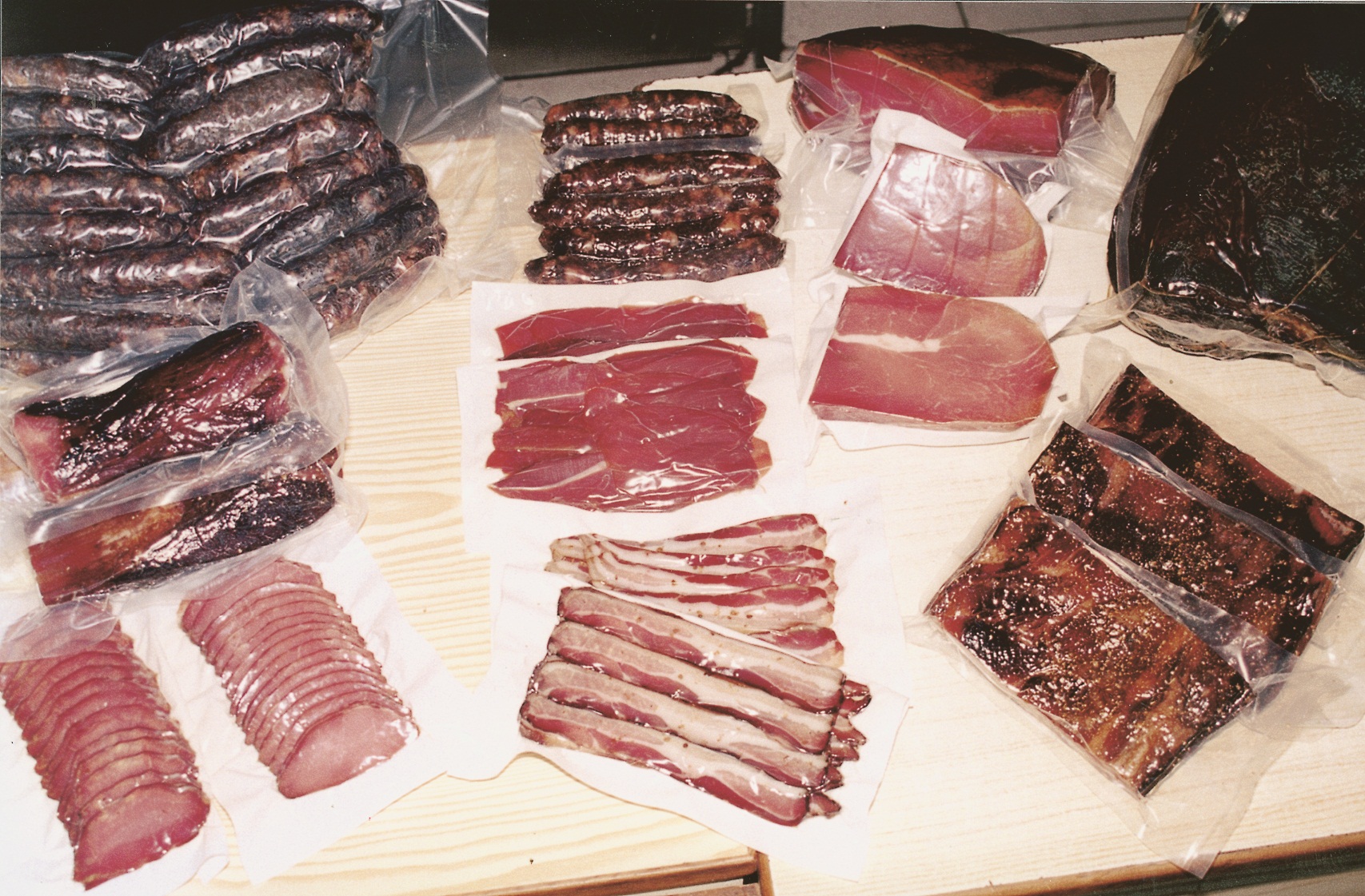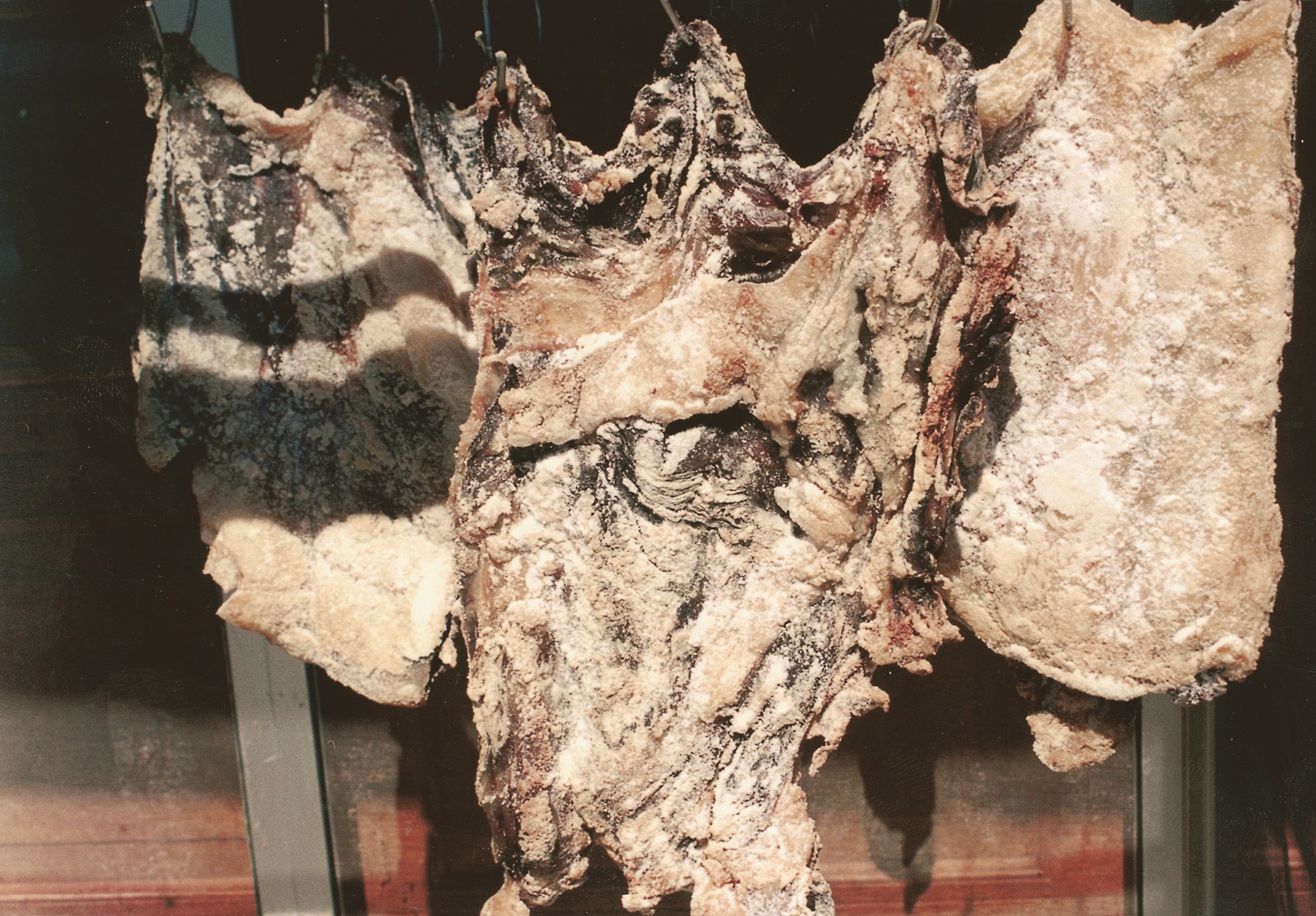Name - Origin
Χοιρομέρι. Hiromeri, a type of ham, has been and still is considered by Cypriots as the most luxurious cured pork piece (Patapiou & Lazarou, 2012)
Hiromeri is a word that deives from combining hiros (pig) and meri (thigh). The word hiromeri appears during the Byzantine period, which is not surprising as many Byzantine elements have survived in Cyprus. Although hiromeri is found under various names in other parts of Europe (in Italy as persutto or prosciutto, in France as jambon in the United Kingdom and in the United States of America as ham, and in many other countries such as Serbia, the Netherlands, Spain, Germany, Croatia, but also in Greece as hiromeri, it seems that what differentiates Cypriot hiromeri from other similar types of ham is the distinct way of preparing, curing and flavouring it (Patapiou & Lazarou, 2012).
1) Hiromeri was prepared with great care by the inhabitants of twenty villages of the Pitsilia and Troodos areas (Xioutas P., 1978). Hiromeri was made from pork thigh and shoulder blade. The inhabitants of Pitsilia and Troodos would remove the skin and fat from the meat, salt it, season it with cumin and marinate it in wine for 40 days (Neophytou, 1991). The meat was then smoked with thyme or sage and finally a heavy object (usually stones), was placed on it to form a rectangular shape (Houtri, 2009). In order to better preserve hiromeri, in Pitsilia it was spread with olive oil or melted white wax (Xioutas, 1978).
2) The preparation of hiromeri is done very carefully and the whole process includes the following steps: the skin and fat are removed from each of the thighs the two front legs and the shoulder blades, known as “koutales” in the Cypriot dialect, they are salted and placed in sterkon wine, i.e. dry wine, for 40 days (or for 12 or 15 days in the area of Pitsilia). Some people used to season the meat with toasted cumin before placing it in wine. They would then hang the meat parts to smoke them. The pieces were pressed using plates with heavy stones (today, a press is used once a week to form the desired shape). They would then hung the pieces two by two in the air to dry out and be smoked using branches of aromatic shrubs (thyme or sage).
In lowlands, hiromeri was often smoked with shinian i.e skinon (Pistacia lentiscus). Hiromeri is hung from the tendon of the lower end of the thigh bone, known in Cypriot dialect as tsounarin.
The whole process of the traditional method of preparation takes about a month and a half. When hiromeri was prepared using the front leg or shoulder blade of the animal, it was considered by experts as second-rated.
The best hiromeri is considered to be the one which is prepared using a pig's thigh weighing 4-5 kg, the meat of which, when cut, is somewhat tough, it has the colour of old wine and is neither salty nor unsalted, with an excellent taste and a pleasant smell (Patapiou & Lazarou, 2012).
Functional and symbolic role
Hiromeri is a fine quality cold cut which in the past was consumed by a limited circle of wealthy or prominent Cypriots, mainly by well-off people as well as bishops and abbots (Xioutas, 1978). Hiromeri was consumed as a snack or a mezé. Traditionally, it was served as a meze (i.e. as an appetiser, "first course"), cut into thin slices (75-100 g each) or cubes that would accompany local red wine or zivania (a local alcoholic drink similar to "raki"). Nowadays, hiromeri is also served with cheese and fruit, similar to the Italian prosciutto, as well as with alcoholic beverages other than zivania, such as beer. HIromeri has a very low fat content (4.3 g/100 g) and low calories (178 kcal/100 g). In addition, the traditional way of smoking Cypriot hiromeri ( which is still used by small producers), is identified as containing no by-products of carcinogenic substances beyond the permissible limits. This element enhances its nutritional value, unlike industrialised cold cuts, that are smoked using chemicals. In particular, according to data recently published by the European Food Safety Authority, the industrialised method of smoking meat, compared to the traditional method, results in increased levels of aromatic carcinogens above the permitted limits (Patapiou & Lazarou, 2012).
In various folklore publications on the villages of Cyprus, the custom of producing charcuterie is described in detail; the production would take place during the period between the religious festivals of Christmas and Epiphany. During the last century, it was customary for each rural family to acquire a young pig, to raise it and then produce charcuterie, such as hiromeri, lountza and others. These would be consumed throughout the year (Patapiou & Lazarou, 2012).
During the time between Christmas and Epiphany, slaughtering of a family’s pig and preparing all the cold cuts was a special event which was celebrated with relatives and friends; they would all gather at the householder's place to assist in the preparation of cold cuts and then hold a feast where various pork delicacies would be served by the housewife (Patapiou & Lazarou, 2012).
Each and every part of the animal was used for cold cuts. The front legs were used to make sausages, the tenderloin was used to make lountza (pork fillet matured in wine for 10-15 days, flavoured with dry coriander and smoked) and the breast was used to make bacon (known in the local dialect as "posyrti"), the ribs were used to make 'pasta' or 'koumniasta' (cured meat) and the head and legs were used to make 'zalatina'. Hiromeri was made from the animal's thigh (Patapiou & Lazarou, 2012).
Additional information and bibliography
Patapiou N & Lazarou C (2012). Hiromeri: a specialty ham of Cyprus; historical evidence, culinary and cultural perspectives . Ecology of Food & Nutrition [In press].
Houtri M. (2009). Παραδοσιακά Αλλαντικά της Κύπρου (2η έκδοση), Press and Information Office, Ministry of Agriculture, Natural Resources and Environment, Nicosia.
Xioutas P. (1978). Κυπριακή λαογραφία των ζώων. Publications of the Centre for Scientific Research XXXVIII, Nicosia.
Neophytou K. (1991). Συντήρηση κρέατος, Λαογραφική Κύπρος, 41: 63-73
Nasa Patapiou, Stalo Lazarou, Antonia Matala, Demetra Demetriou

